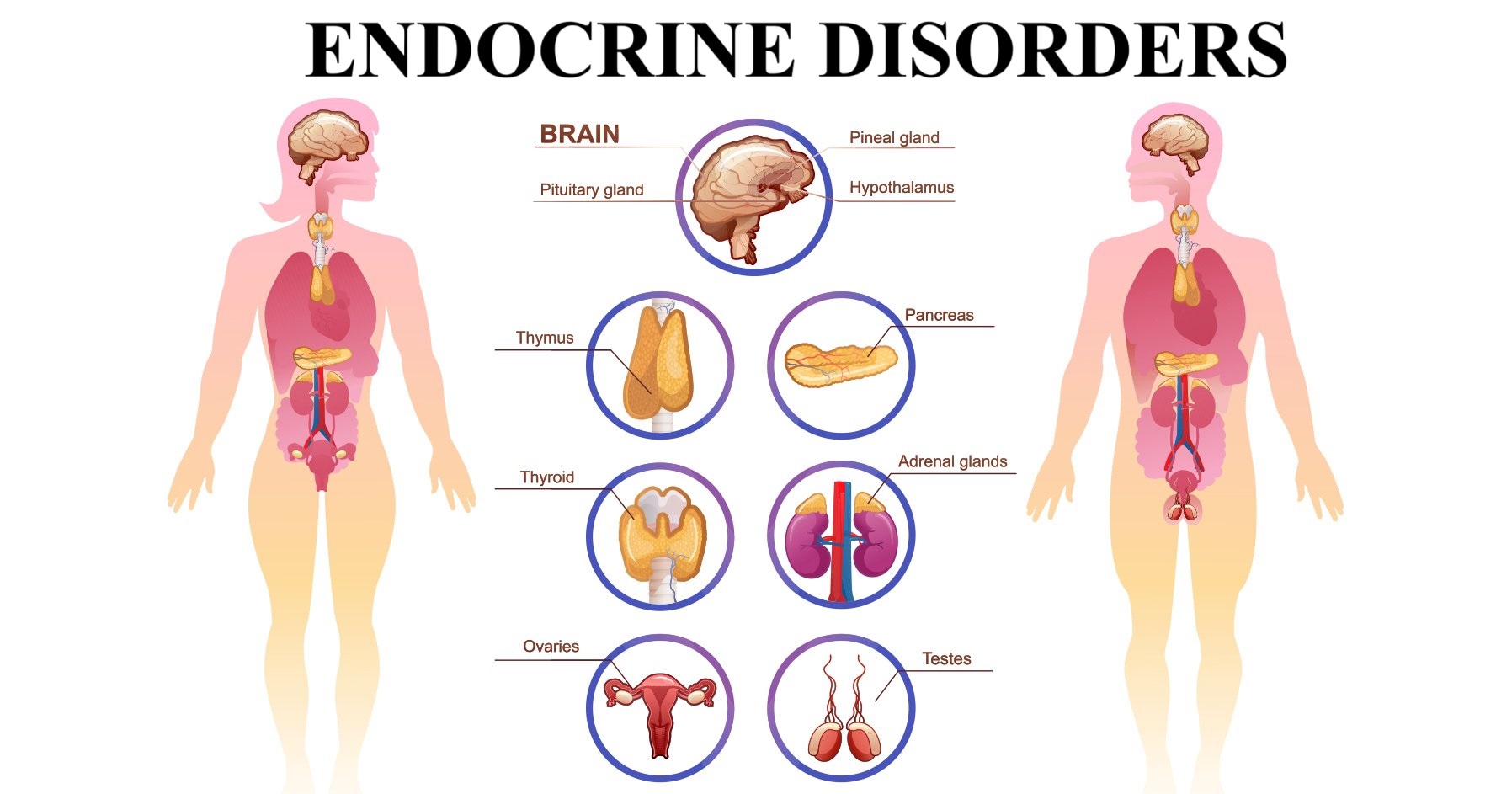Endocrine disorders are caused if the hormone levels are too high or too low, or if your body doesn’t respond to hormones in the expected way.
1. Endocrine disorders of Pituitary gland
Effects of hypersecretion of pituitary
(a) Gigantism
- Oversecretion of Growth Hormone from childhood results in extraordinary growth of long bones.
- As a result the person attains extraordinary height and all the body parts are in proportion.
(b) Acromegaly
- Oversecretion of Growth Hormone after adulthood leads to disproportionate growth of the bones of hands, feet, cheek and jaws.
- The person develops large nose and thick lips. It is known as acromegaly.
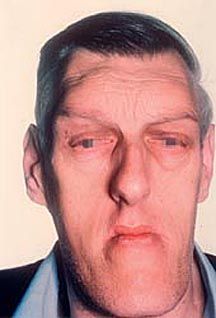
(A)
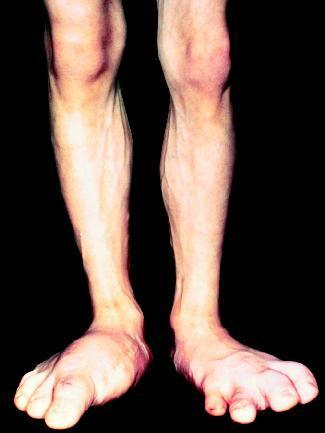
(B)
Figure (A) & (B:) Acromegaly
Effects of hyposecretion of pituitary
(a) Dwarfism or Pituitary nanism
- Undersecretion of GH from childhood leads to slower growth of bones and the other body organs. The person remains short statured. This condition is known as Dwarfism.
(b) Diabetes insipidus (Water diabetes)
- Undersecrerion of ADH or Vasopressin results in diabetes insipidus.
- In this condition large amount of urine is excreted out leading to dehydration thirst.
2. Endocrine disorders of Thyroid gland
Effects of hyposecretion of thyroxine
(a) Cretinism
- Hyposecretion of the thyroxine in children due to atrophy (degeneration) or defective development of thyroid gland leads to cretinism.
- Infants with this disease are called cretin .
This order is characterized by -: - Low metabolic rate
- Retarded growth and sexual development
- Retarded mental development
- Low body temperature, heart rate, pulse rate

(A)
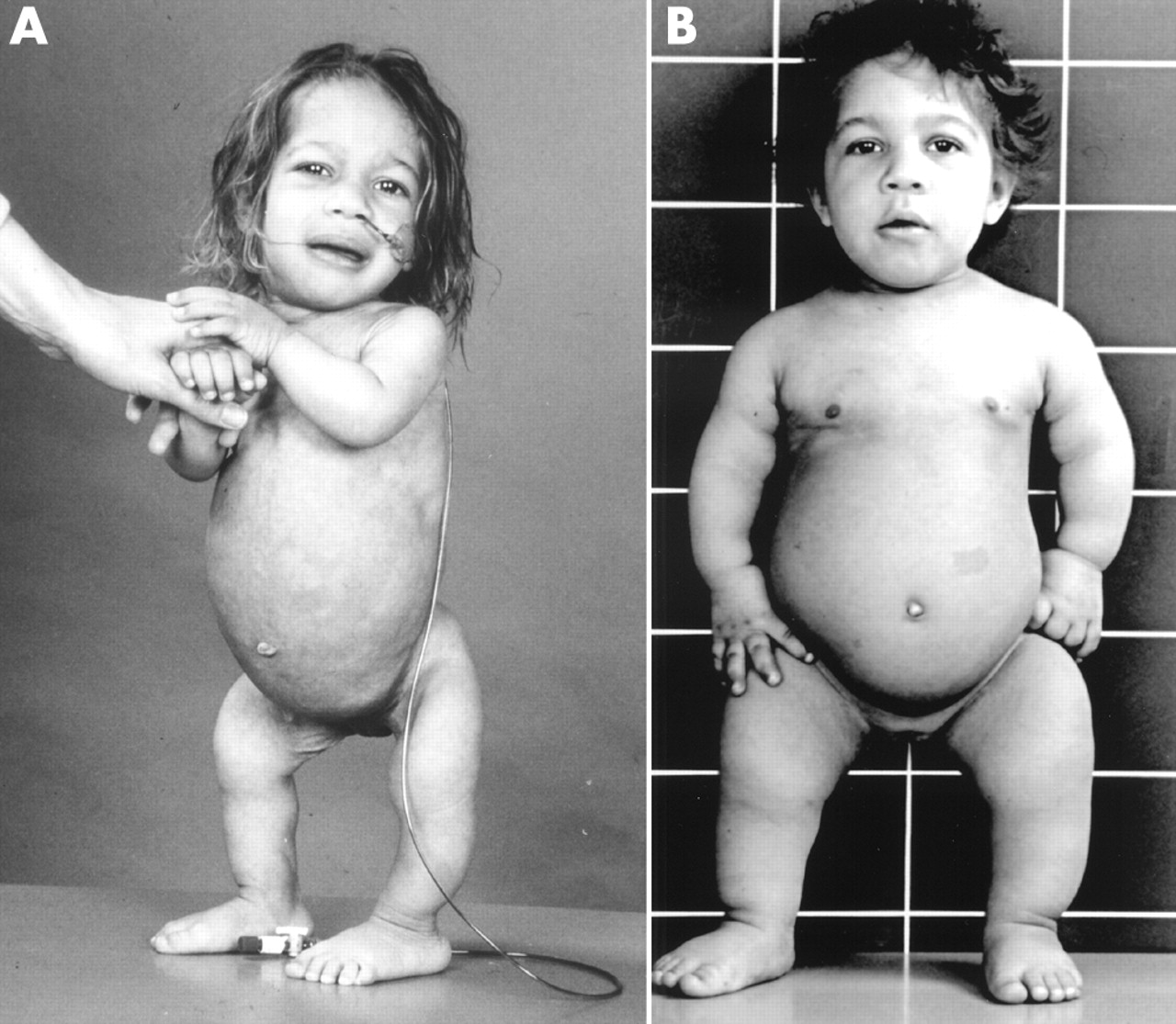
(B)
Figure (A) & (B): Cretinism
(b) Myxedema (Gull’s disease)
* Oedema – Thickening of skin from accumulation of fluid in the subcutaneous tissue.
- Hyposecretion of thyroxine in adults produces myxedema.
This disorder is characterized by -: - Thick puffy skin – swollen face, thick lips, face and hands due to oedema.
- Slow heart rate, pulse rate, body temperature
- Sensitivity to cold increases, lethargy and gain in weight.
* It is more frequent in females.
(c) Simple goiter or iodine deficiency goiter
- Iodine deficiency in food leads to hypertrophy ,i.e., enlargement of thyroid gland.
- Hormone production is reduced.
- It causes swelling of the neck.
- Most common in people of hilly region where soil and water are deficient in iodine compounds.
- It can be corrected by using iodized salt in the diet.
Effects of hypersecretion of thyroxine
(a) Grave’s disease or exophthalmic goiter
- Caused due to hypersecretion of thyroxine.
Characterized by -: - Protrusion of eyeballs (exophthalmos)
- Increased rate of heartbeat.
- Increased metabolism and appetite which results in loss of weight
- Decreased nervous irritability
- High blood pressure and high sweating.
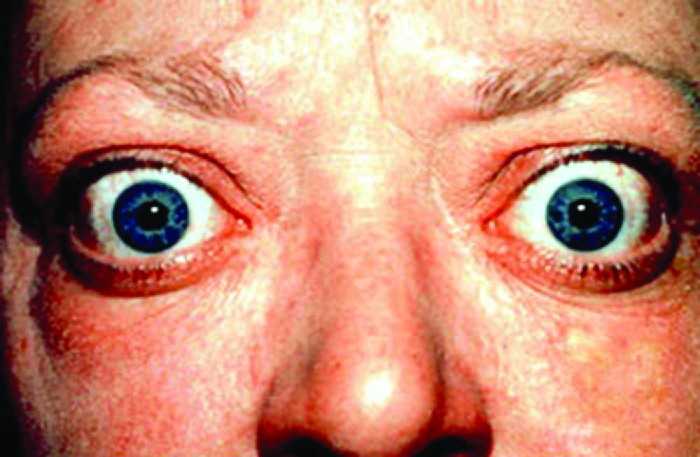
(A)
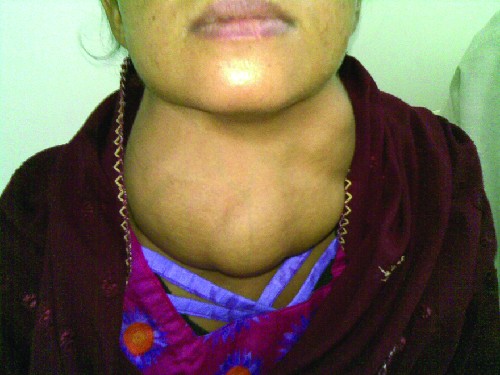
(B)
Figure (A) & (B): Exophthalmic goiter or Graves’ disease
3. Endocrine disorders of Adrenal gland
Effects of hyposecretion
(a) Addison’s disease
- Caused due to low secretion of mineralocorticoids (aldosterone.)
Characterized by –: - Decreased reabsorption of sodium ions so low plasma sodium ion (hyponatremia)
- High plasma potassium ion – Hyperkalemia
- Hypoglycemia – Low blood sugar level
- Nausea, vomiting and diarrhea

Figure (A), (B) & (C): Addison’s disease
Effects of hypersecretion of Adrenal cortex hormones
(a) Cushing’s syndrome
- It is caused due to oversecretion of glucocorticoids (cortisol)
It is characterized by -: - Moon-shaped face
- High blood sugar in urine – Hyperglycemia
- Obesity
- Hanging abdomen and buffalo hump on the back
(b) Conn’s syndrome or Hyperaldosteronism or Aldosteronism
- It is caused to the oversecretion of mineralocorticoids (aldosterone)
It is characterized by -: - High plasma sodium – Hypernatremia
- Low plasma potassium ion – Hypokalemia
- Rise in blood volume and high blood pressure
- Muscular weakness, cramp and paralysis
(c) Adrenal virilism
* Virilism – Disorder in which male-like secondary sexual characters such as beards, moustaches develop in females due to oversecretion of adrenal androgens (androsterone)
Symptoms -:
- Underdevelopment of breast
- Lack of menstruation
- Temporal baldness
- Degeneration of uterus and ovaries.
- Enlargement of clitoris.
4. Endocrine disorders of Pancreas
Effects of hyposecretion of insulin
(a) Diabetes mellitus
- Mellitus means honey.
- It is caused due to the deficiency of insulin.
- In this disease the liver and muscle cells are unable to convert excess of glucose into glycogen. Thus the level of blood sugar increases (Hyperglycemia).
- Loss of weight and becomes weaker.
- Insulin injections to such persons can control the glucose level, but it is not a cure.
Effect of oversecretion of insulin
Hypersecretion of insulin causes lower blood glucose level and if the glucose level falls too low, a person may enter in coma state or may become unconscious. This condititon is known as insulin shock (Hypoglycemia).
5. Endocrine disorders of Parathyroid gland
- Parathyroid gland are four in number present on the ventral surface of the thyroid gland.
- It secretes hormone known as parathyroid hormone (PTH).
- PTH controls calcium and phosphate balance in the body.
- Hyposecretion of PTH causes tetany.
- Hypersecretion of PTH causes Osteitis fibrosa cystica (also known as brown tumor of bone).
6. Thymus gland
- It is well developed in children whereas it degenerates in old age.
- It produces hormone thymosin concerned with immunity.
